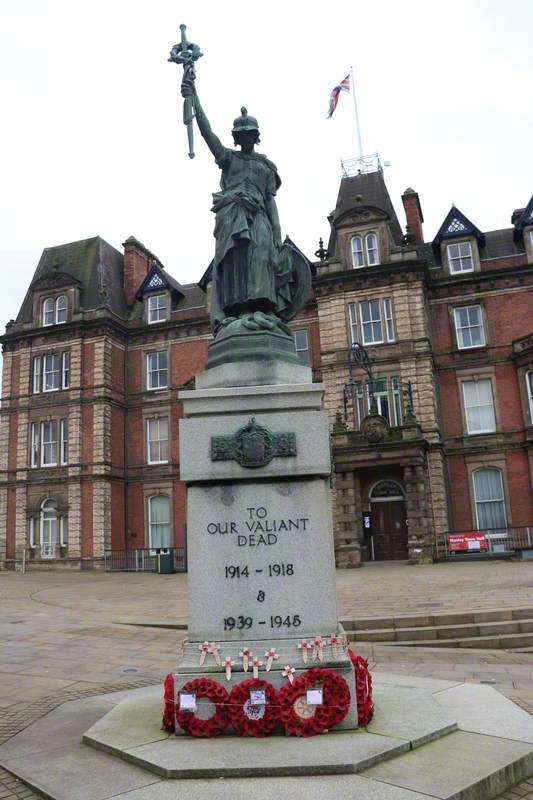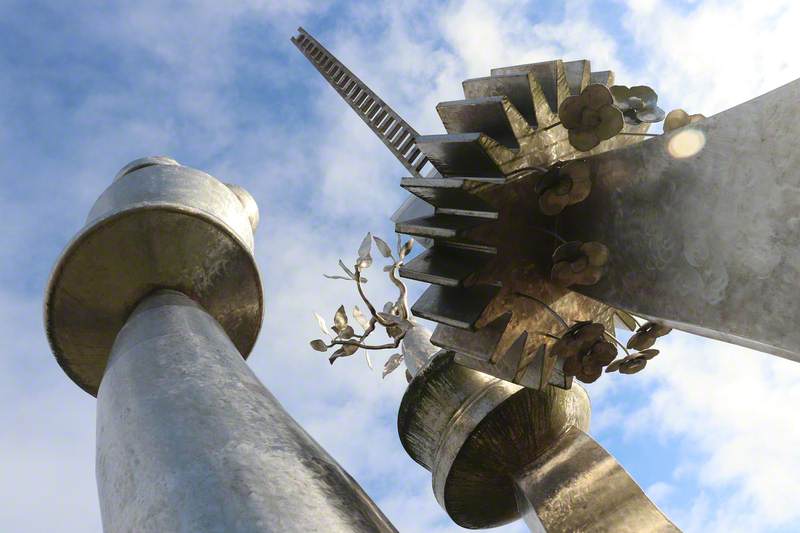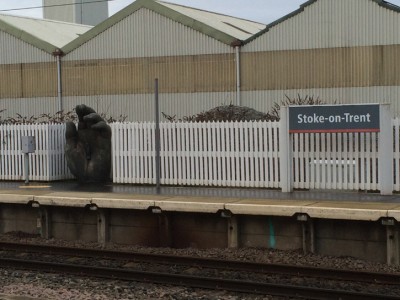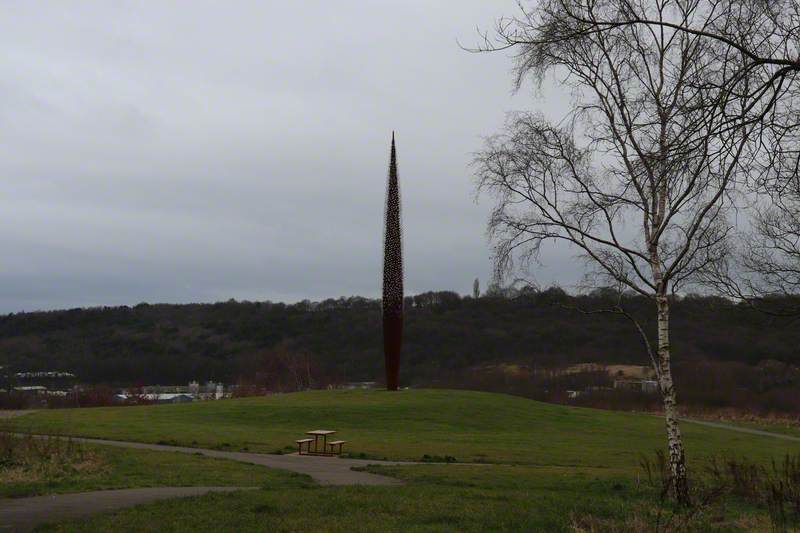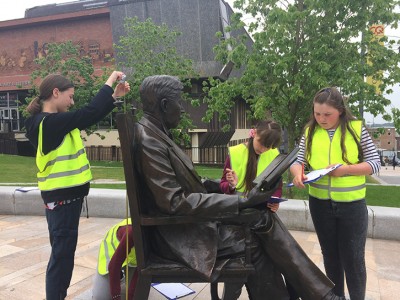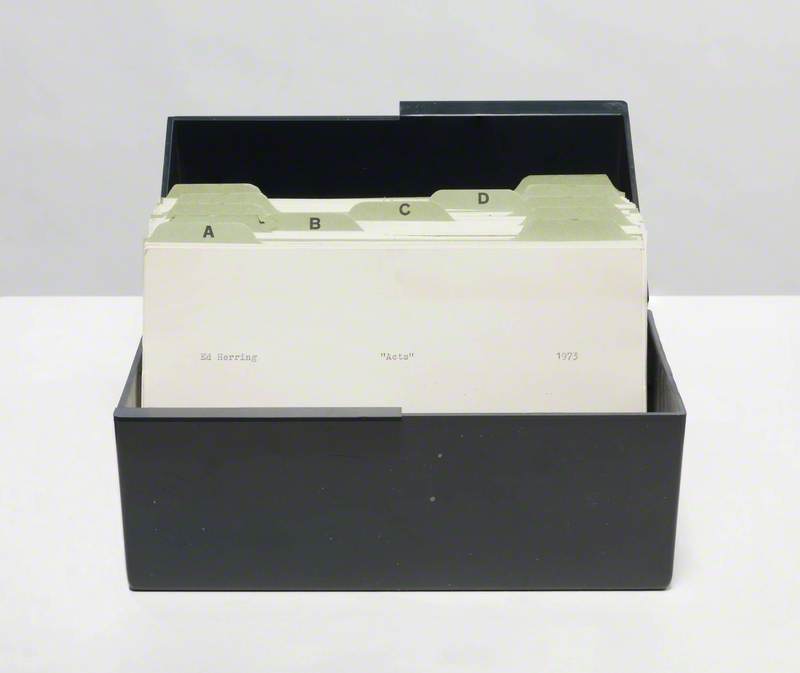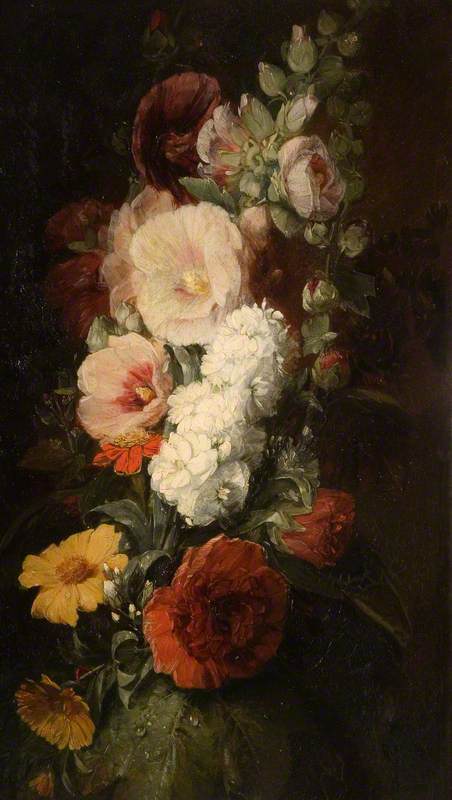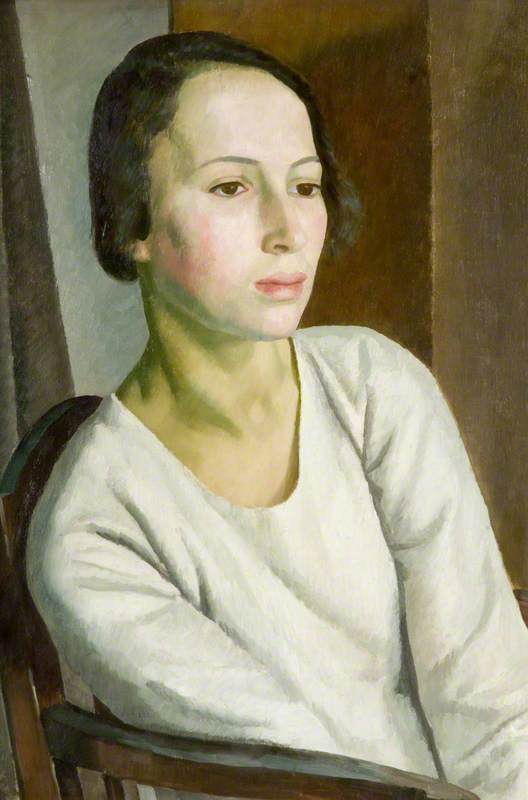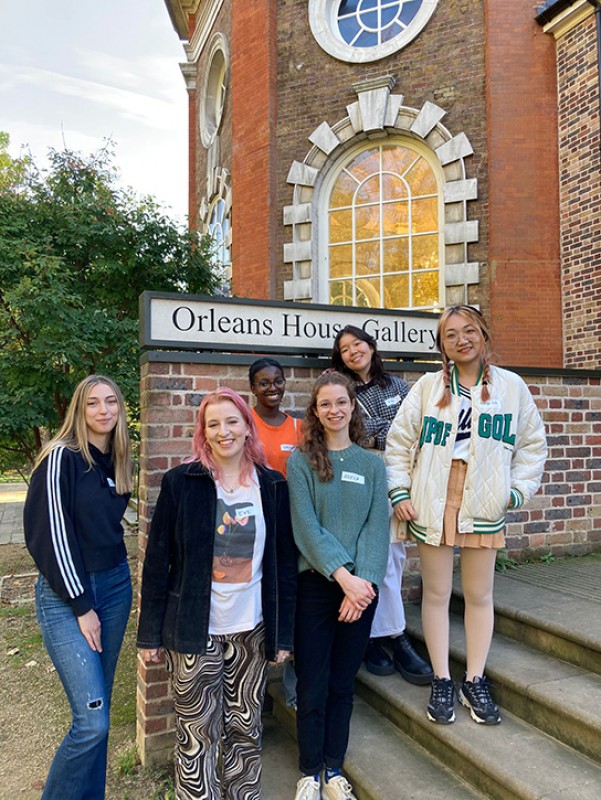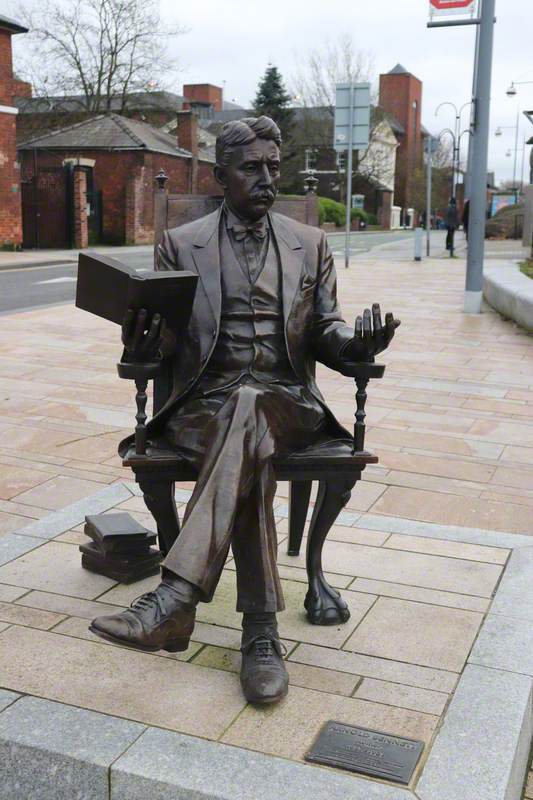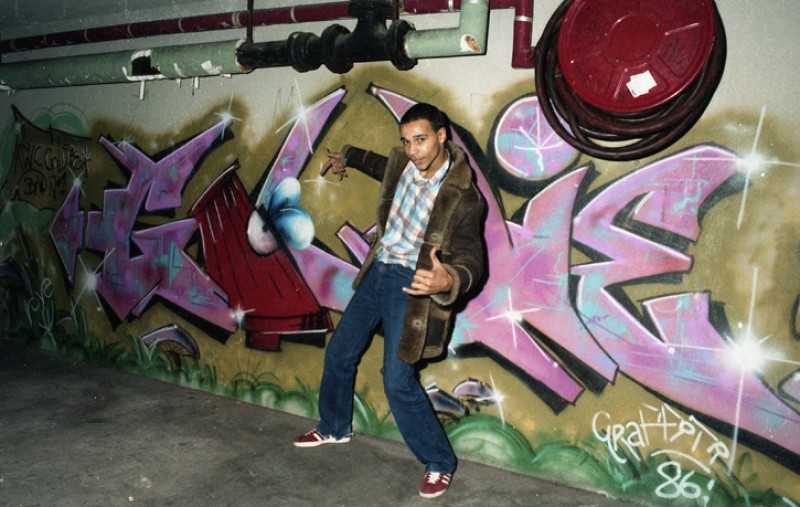Since we moved our main office to Stoke-on-Trent in January 2022, Art UK has been keen to work with students from Staffordshire University, where our office is located. We were delighted, in early 2024, to be connected with Fine Art student Layton Hylton, as he undertook a placement project as part of his course, which has seen him use the Art UK website to locate public sculptures in Stoke-on-Trent as inspiration for his drawings.
Artist Layton Hylton with his work
We gave Layton a starting point for his research, then had this conversation as he was completing his project. He talks about the inspiration from within his family, growing up in the West Midlands, and his exploration, through his art, of the dual personalities within us all.
Katey Goodwin, Art UK: Tell us a bit about yourself, Layton. Where are you from? When did you first discover that you enjoyed art?
Layton Hylton: I am 20 years old and of Jamaican-British heritage. I grew up in Brownhills, a small town north of Birmingham in the West Midlands.
It was my grandfather who first introduced me to art, as he was a painter. He used to airbrush designs onto motorcycle tanks, which he did professionally for a time, before changing jobs when he got married to my grandma. I see my grandfather every week and show him the artworks I have been working on. He is a great supporter of my practice.
I got more into art during lockdown, when I had too much time on my hands and needed something to do. I was struggling with my other A-levels at that time, so art became the subject I could see as an option to study at university. Going to university after my A-levels seemed like the best option for me, so I knuckled down with my art to make sure I got a university place.
I am the first of my generation of my family to go to university, which my mum is very proud of. She was unsure at the start of my plan to study art at university. She is a deputy head of a primary school, so was more keen on STEM subjects, but she is a great supporter of the path I have chosen.
Katey: What are you studying and why did you choose Staffordshire University?
Layton: I am studying fine art and I'm in the second year of my course. I chose Staffordshire University as it has very good studio spaces for the students. No other universities that I visited had the same space for each student, which includes room for students to work and exhibit their own art.
Katey: Tell us about the background to the artworks you are creating at the moment. What is the meaning behind them?
Layton: I am exploring the duality of personalities, emotions and how we dissimilate pain, suffering and pressure. I represent this through the imagery of statues.
Katey: You have started using statues in Stoke-on-Trent as an influence on your work and the first artwork in this series is based on the statue Perseus and Medusa at Trentham Gardens. How did you come across this sculpture and why did it inspire you?
Layton: I found a photo of a sculpture of Perseus and Medusa in Florence, but the image didn't have enough detail for me to use for a drawing. Through research, I came across Art UK which revealed there is a copy of the Florence statue in the UK.
Perseus and Medusa
c.1830–1840
Clemente Papi (1803–1875) and Benvenuto Cellini (1500–1571) (copy of) 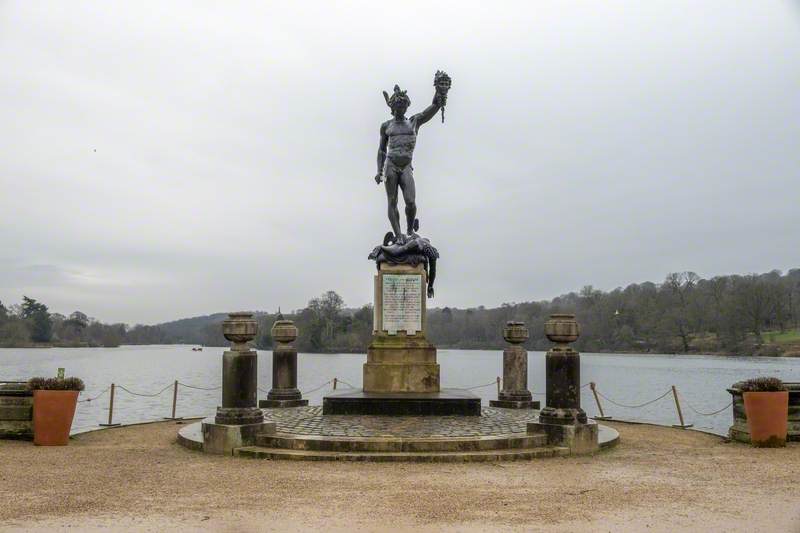
The multiple images of the statue on Art UK gave me the details I needed to create my own drawing of Perseus and Medusa.
Drawing of Perseus and Medusa by Layton Hylton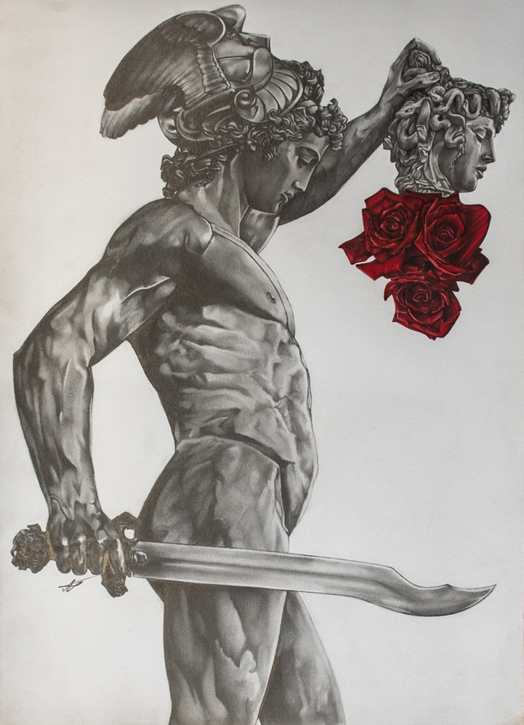
Through the Art UK resources, I realised the statue was just down the road from me in Stoke-on-Trent. That was about a year ago, before I was introduced to you (Katey) at Art UK and before I knew that the Art UK main office was also in Stoke, across the road from my studio!
I travelled down to Trentham to see the statue in real life. I was about halfway through the drawing when I first visited, so I took lots of photos. I visited again when I had finished my drawing and took photos of the statue and my drawing side by side.
Drawing of Perseus and Medusa with the sculpture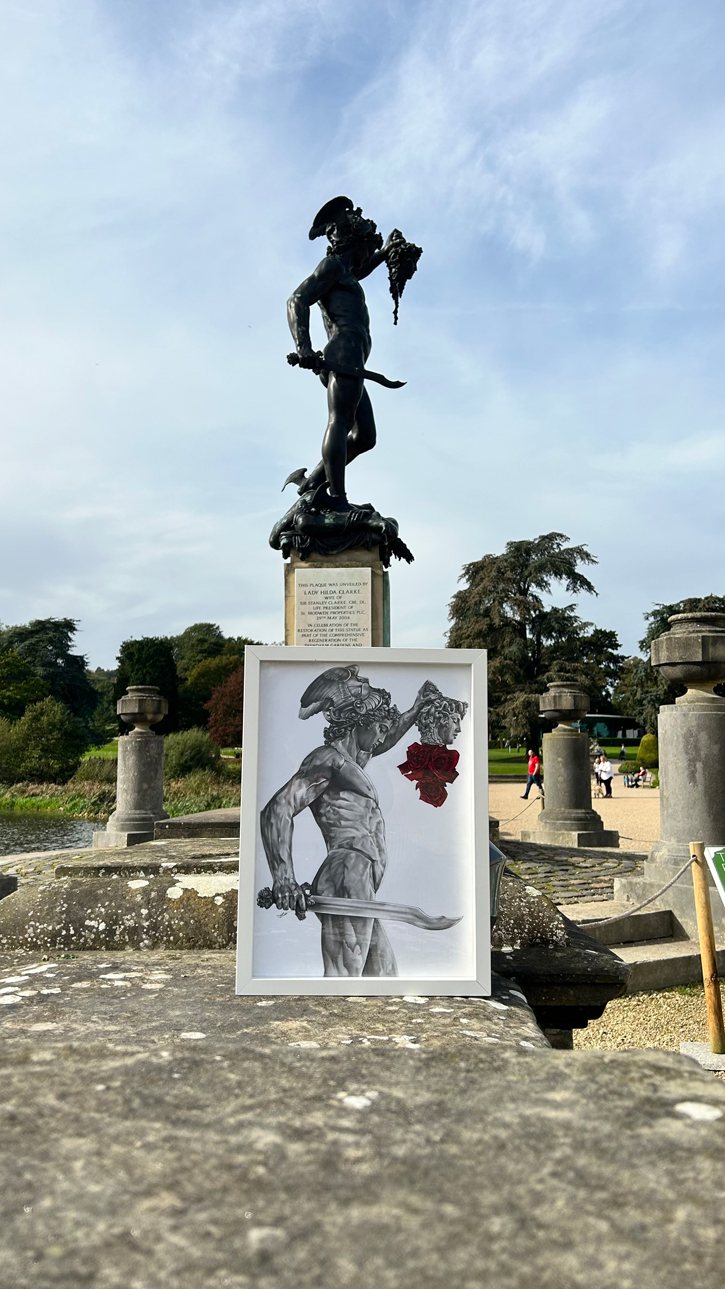
Seeing the statue in real life was useful, for seeing the scale and materials of the work. It did confuse me a bit too, as it was a different time of day to the time the photos on Art UK were taken, so the colour and shadows it cast looked a bit different. Medusa's head was darker underneath than I had depicted in my drawing because of the shadow it cast. The statue was impressive in real life.
Drawing of Perseus and Medusa with the sculpture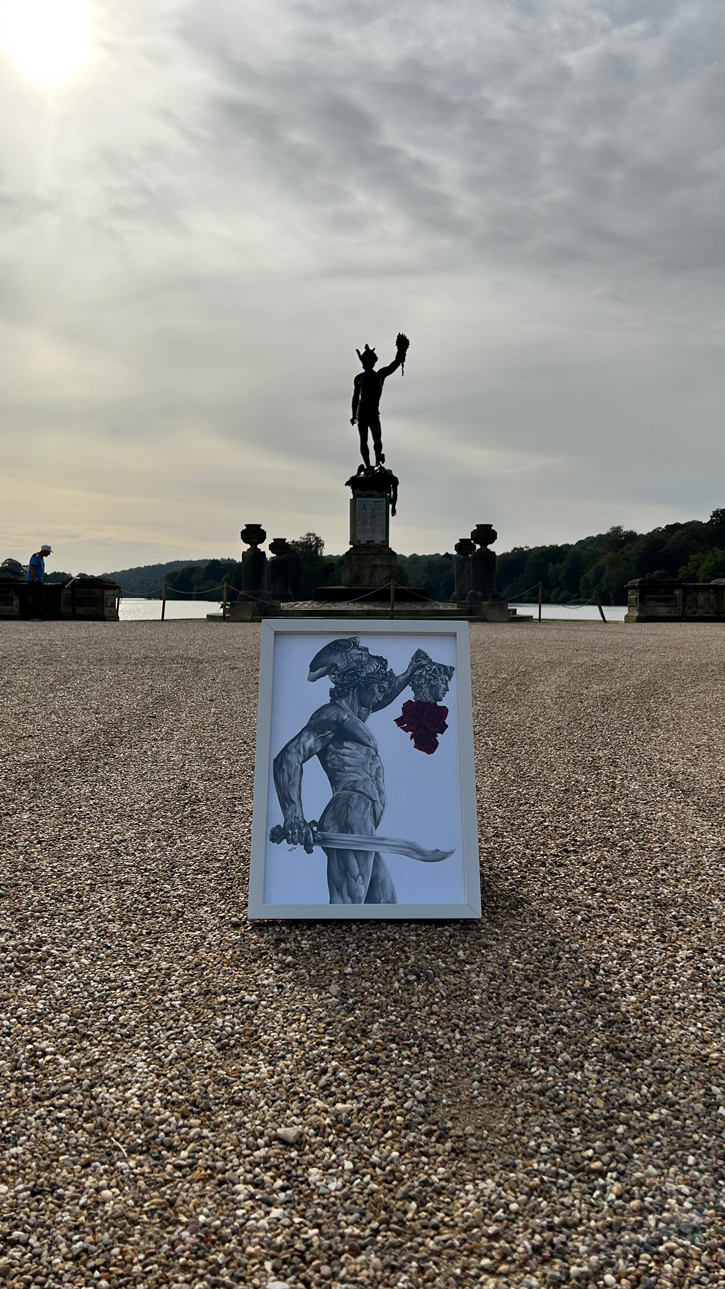
Katey: How have you used the Art UK website to find and research other public sculptures in Stoke-on-Trent?
Layton: Searching the Art UK website is how I found out about Burslem Town Hall and the architectural sculptures on the top of the building. That's how I saw the figures of the men holding up the tower, which are not easy to see from the ground.
Clock Tower with Caryatids Figures
1854
George Thomas Robinson (1829–1897) and L. Dunn (active 1854) 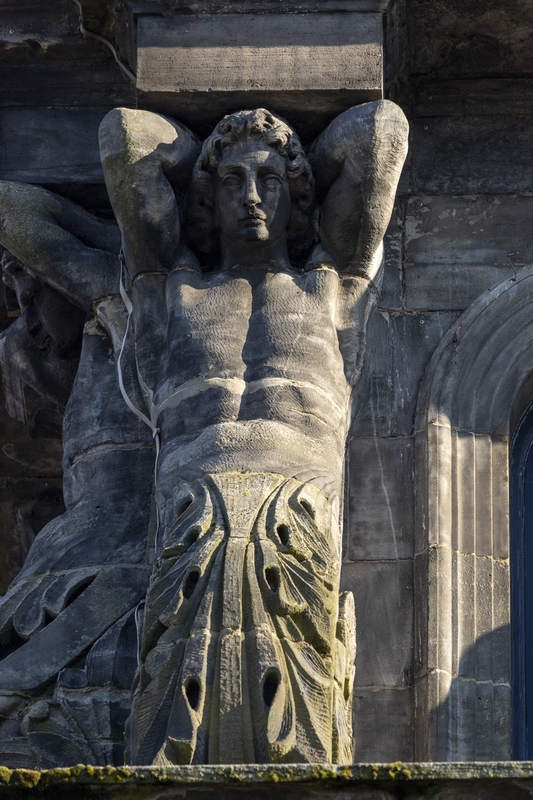
Drawing of a Caryatid by Layton Hylton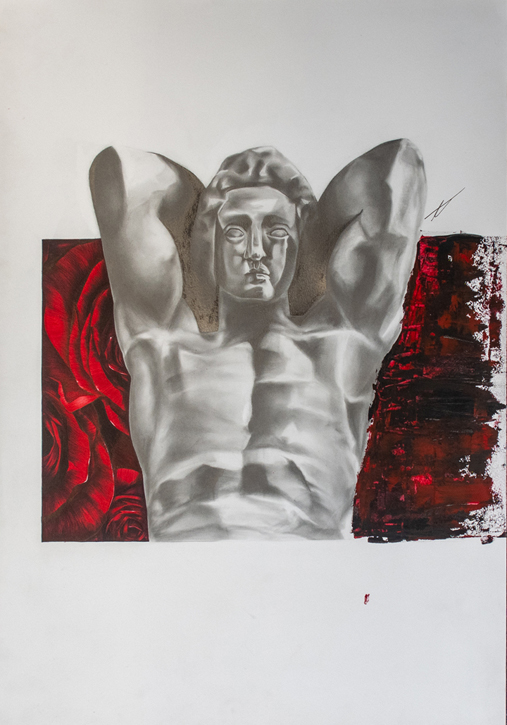
Katey: Did you visit the sculptures in person, once you had found them on the Art UK website?
Layton: Yes. I used the map function on Art UK to find the location of the town hall, as I'm not from the area and needed to know how to find it.
Clock Tower with Caryatids Figures
1854
George Thomas Robinson (1829–1897) and L. Dunn (active 1854) 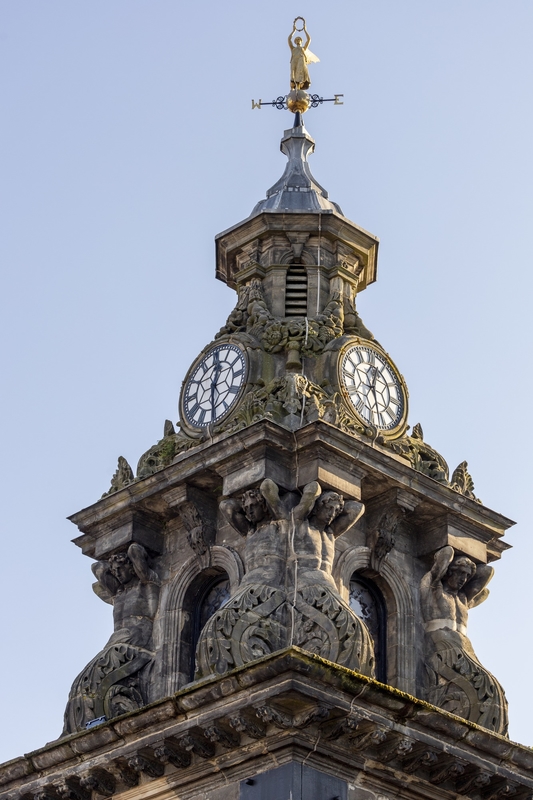
I also used Art UK to find another statue which is part of Hanley War Memorial, which has been the focus of two other artworks I have produced.
The Art UK website told me more about the sculpture, including the artist and the date it was made. I also went to visit this sculpture in person. Seeing it in real life gave me a better understanding of the statue. I hadn't realised the figure in Hanley was female until I saw it in person!
Drawing of Victory by Layton Hylton
Katey: Why did you choose the architectural features on Burslem Town Hall and the statue on Hanley War Memorial as inspiration for your artworks?
Layton: To me, both sculptures represent the strength of the people of Stoke-on-Trent. With this placement, I wanted to look at the personality of the city; the comparison between strong and prideful individual residents of Stoke-on-Trent and the soft and kind personalities of the people. The kindness and sweetness of local people is represented by the roses and the painted element of the artworks, with their strength and pride represented by the pencil drawings of the statues.
Drawing of Victory's sword by Layton Hylton
Katey: Does your own background influence the artworks you create?
Layton: Yes. In Brownhills, there is not a lot to look at, no statues, nothing that interested me. I've always been intrigued by the anatomy of people and statues were a great source of reference for drawing people. Then got into the history of the artworks and the mythology they represented.
The way I grew up, in a rough area, it was difficult to stay away from crime and gang culture, so I had to learn to switch my personality between being strong and stern and being gentle and kind, depending on who I was with. This drove me to use roses as imagery and to the meaning of dual personality behind my artwork.
Katey: What materials do you use to create your artworks?
Layton: I've always used graphite pencils for my drawings, but lately I've been using Bic biros, acrylic paint and airbrushing. Pencils and pens are cheap and accessible, so I've always got materials to hand. I've started airbrushing to follow in the footsteps of my grandfather and continue his legacy.
Katey: Are there any artists who influence your work?
Layton: I like the work of Tanner Valant, a surrealist artist who uses roses, airbrushing and pencil. I admire the way he uses flora in his works and how he represents life.
I am influenced by my grandfather, Philip Haywood. His paintings and airbrushing drove me to pick up art and start airbrushing.
Katey: Do you have any plans for the future and how your artist practice might develop?
Layton: I'm really loving airbrushing. I've just started a series of works that involve airbrushing and exploring the idea of how where people are from, and how their background and experiences have an influence of their personality and how they present themselves in different situations. For example, for one of my artworks of a bust of Michelangelo's David, I have added a balaclava to represent my own background and experiences and my own self-reflection – who I am now and who I could have been if I went down a different path.
Katey: Where can people see your work?
Layton: I have an Instagram account dedicated to my art, so people can find me there.
Katey Goodwin, Art UK Deputy Chief Executive and Director of Community Engagement
